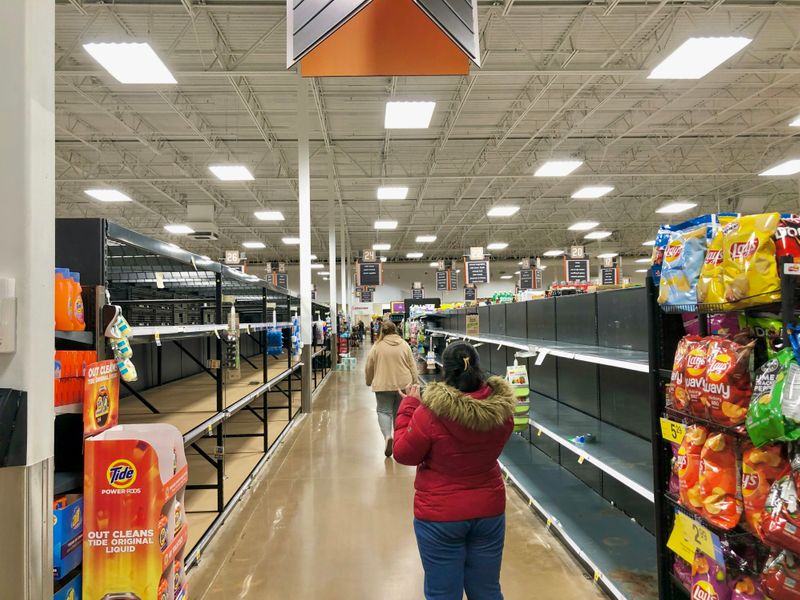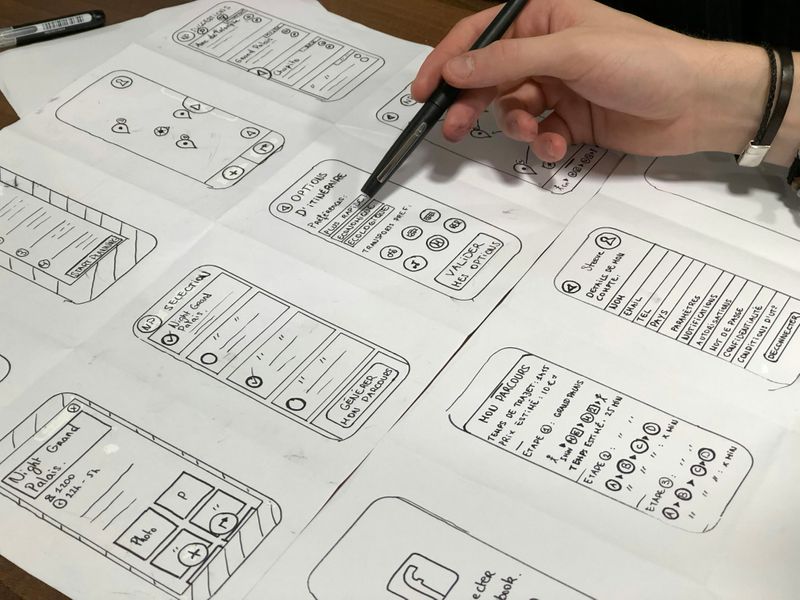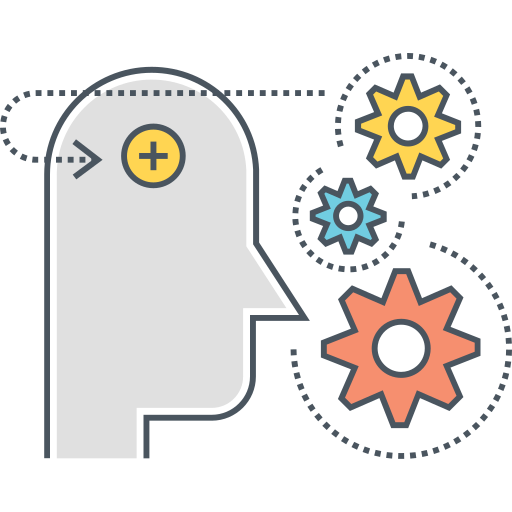Do you wonder how businesses, ecosystems, or societies interact with each other? If so, systems thinking is a step in the right direction!
Systems thinking recognizes patterns and connections that work together to drive outcomes. Understanding how these parts interact will help you guide operations, design, and decision-making.
 Photo by Kelly Sikkema on Unsplash
Photo by Kelly Sikkema on UnsplashSystems thinking is built on six core concepts, each playing a vital role in strengthening critical thinking:
Interconnectedness: recognize the connections
Synthesis: understand the whole picture
Emergence: patterns from interactions
Feedback loops: actions shape outcomes
Causality: uncover hidden reasons
Systems mapping: visualize relationships
These terms might feel overwhelming but each concept carries specific meaning and purpose, depending on where they're applied.
1. Interconnectedness: Recognize the Connections
Interconnectedness is how every action, decision, or event influences others.
Recognizing these connections helps us see beyond narrow viewpoints and see how separate parts come together to create larger patterns.
A helpful way to view this is shifting from a linear chain of events to a circular chain of events.
Case Example
A delay in supply distribution doesn't only affect logistics. The delay can frustrate customers due to late/delayed deliveries, thus harming brand reputation. This can lead to less customer purchases or customer loss.
 Photo by Brett Wharton on Unsplash
Photo by Brett Wharton on UnsplashUnderstanding how each element is connected allows us to move forward and view how these connections create an overall system. To view interconnectedness from another perspective, you can check out the video below explaining how the pricing of an avocado is created:
Think: "How do all these things connect?"
Notice how one decision or event influences others.
Ecosystems, supply chains, or even friendships can be a starting point to visualize interconnectedness.
Consider: "What are the ripple effects of these connections?"
What happens when a link in a system doesn't work?
What connections are impacted?
2. Synthesis: Understand the Whole Picture
 Photo by Aedrian Salazar on Unsplash
Photo by Aedrian Salazar on UnsplashThrough synthesis, we put elements back together to understand the information and its outcomes as a whole. This is known as "understanding the bigger picture". By examining how all the system components fit together, we can understand how systems succeed and fail.
Case Example
In healthcare, synthesis is seen in patient treatment. In addition to treating a patient's symptoms, providers must consider their lifestyle, environment, and other factors. All these contribute to the patient's overall well-being.
For instance, if a patient has an active lifestyle but lives in an environment where they're exposed to secondhand smoke daily, their lung and heart health would be negatively impacted despite their good habits.
By connecting these factors, providers can identify root causes, personalize treatments, and design interventions that improve long-term outcomes.
 Photo by Tiffany Chang on Unsplash
Photo by Tiffany Chang on UnsplashThink: "What leads to failure?"
Take a look at 50 examples of companies that failed to innovate. Notice anything in common?
For a deeper dive, check out Causal Loop Construction.
Consider: "How do the details connect to the bigger picture?"
How do individual tasks, decisions, or events align with overall goals?
What connections are impacted?
What do all these parts add up to?
3. Emergence: Patterns from Interactions
When we look at the system as a whole, we see it act in ways that no single part could act on its own. This leads us to emergence: unexpected patterns and behaviors that arise from interactions.
Emergence doesn't appear randomly. It often forms from cycles of cause and effect within the system.

Case Example
On social media, individual posts and interactions can unintentionally spark viral trends. As others mimic, reference, or respond to these posts, the collective activity amplifies the trend, generating outcomes no single user intended.
 Photo by Brett Jordan on Unsplash
Photo by Brett Jordan on UnsplashThink: Where do small actions create larger, unexpected events? What are some examples of emergent behaviors that you notice?
Consider: Diverse perspectives can often produce emergent solutions. What are unexpected outcomes and patterns in your own projects and communities?
4. Feedback Loops: Actions Shape Outcomes
Feedback loops are foundational to understanding how systems behave over time.
While the other concepts focus on structure or patterns, feedback loops directly explain how a system self-regulates, adapts, or spirals out of control. This element of systems thinking dives deeper into these dynamics.
 Photo by Deva Darshan on Unsplash
Photo by Deva Darshan on UnsplashPositive and Negative Feedback Loops
Feedback loops explain how outputs influence future behavior.
There are two types:
Positive (reinforcing): Change is amplified.
Example: With viral posts, more engagement leads to more engagement.
Negative (balancing): The system is stabilized.
Example: Thermostat-heating or air conditioning is turned off after reaching a certain temperature.

Single-Loop and Double-Loop Learning
Single-loop and double-loop learning are problem-solving methods that dig deeper. They incorporate the whys and hows in feedback loops.
Single-loop learning: Actions are adjusted based on outcomes without questioning the goals or assumptions. “Are we doing things right?”
Example: The thermostat turns off when a room reaches a certain temperature. It reacts, but there's no deeper level of thinking.
Double-loop learning: Assumptions, goals, and decision-making rules that shape actions are ALL questioned. “Are we doing the right things?”
Case Example
A person questions whether or not the ambient thermostat temperature is suitable because energy costs are high during peak hours, and no one is home at midday.
They then set the thermostat to adjust the target temperature based on those factors.

Feedback loops illustrate how things happen, but asking why things are the way they are is critical for a solid understanding.
Think: What are the different loops in daily habits?
Consider: How can you tell when a loop is positive or negative? What are the effects when a loop is positive or negative?
Quiz
In the case example, what type of loop learning is demonstrated when the person controls the thermostat?
5. Causality: Uncover Hidden Reasons
Understanding cause and effect (causality) gives us the pieces we need to reveal deeper relationships and roots that drive system behaviors.
In real life, systems don’t work like a straight line from cause to effect. Things circle back, take time to show results, and don’t always react the way you’d expect.
Independent actions can often have large or delayed consequences.
Case Example
Farms are directed by parent companies to increase crop yields, leading to heavier fertilizer use. Excess fertilizer seeps into nearby waterways, triggering algae blooms downstream. These blooms deplete oxygen levels, causing fish to die in large quantities, disrupting entire food chains.
Think: How do delays, multiple causes, and complex interactions affect systems, using examples such as food chain disruptions and traffic congestion.
Consider: What are the deeper causes of a result? Use root cause analysis tools (e.g., 5 Whys, fishbone diagrams).
6. Systems Mapping: Visualize the Relationships
After uncovering causal relationships, we can bring them together through systems mapping, a visual tool that makes connections, feedback loops, and root causes clear at a glance.
System mapping captures component interactions, clarifies complex relationships, and identifies leverage points in a dynamic visual to help us make informed decisions.
 Photo by Amélie Mourichon on Unsplash
Photo by Amélie Mourichon on UnsplashCase Example
Buses, trains, stations, passengers, and traffic signals interact to move people efficiently.
Complex relationships emerge when delays on one route affect transfers and passenger flow across the network.
System mapping identifies leverage points, such as optimizing schedules or adding express routes, reducing congestion, and improving reliability.
By mapping the system, we identify abstract connections and causes into actionable insights, allowing us to be informed of better strategies and interventions.
Think:
What patterns or feedback loops emerge when you map interactions visually?
How do individual interactions influence the overall behavior of a system?
Consider:
Creating visual sketches to illustrate evolving relationships, showing how changes or new insights.
Analyzing patterns of interaction and interdependence within complex systems like ecosystems or communities.
Take Action
 Photo by no_second_best on Unsplash
Photo by no_second_best on UnsplashThese six practices of systems thinking transforms how we approach challenges by viewing the connections, patterns, and causes. By understanding these relationships, we can design smarter and longer-lasting solutions that address root problems.
Test Your Learning
Since these concepts apply across multiple disciplines, consider exploring the following case example and Bytes to apply them yourself.
You might be surprised at the connections and the ways you can use these ideas!

Apply systems thinking to the following Bytes:
Your feedback matters to us.
This Byte helped me better understand the topic.






